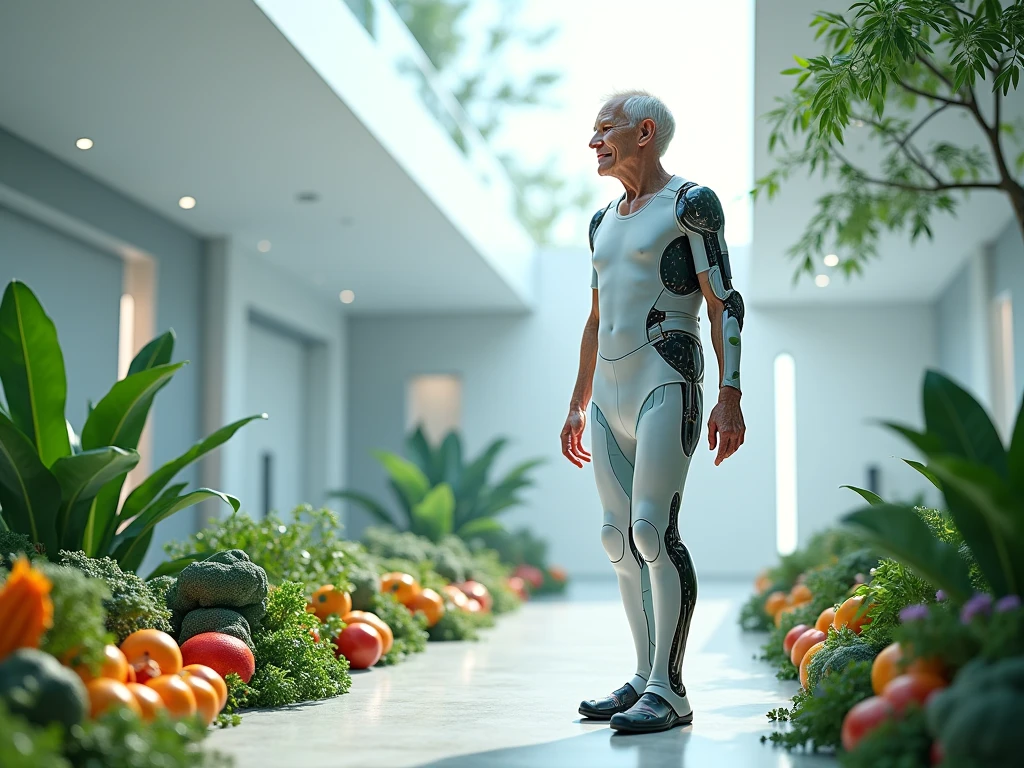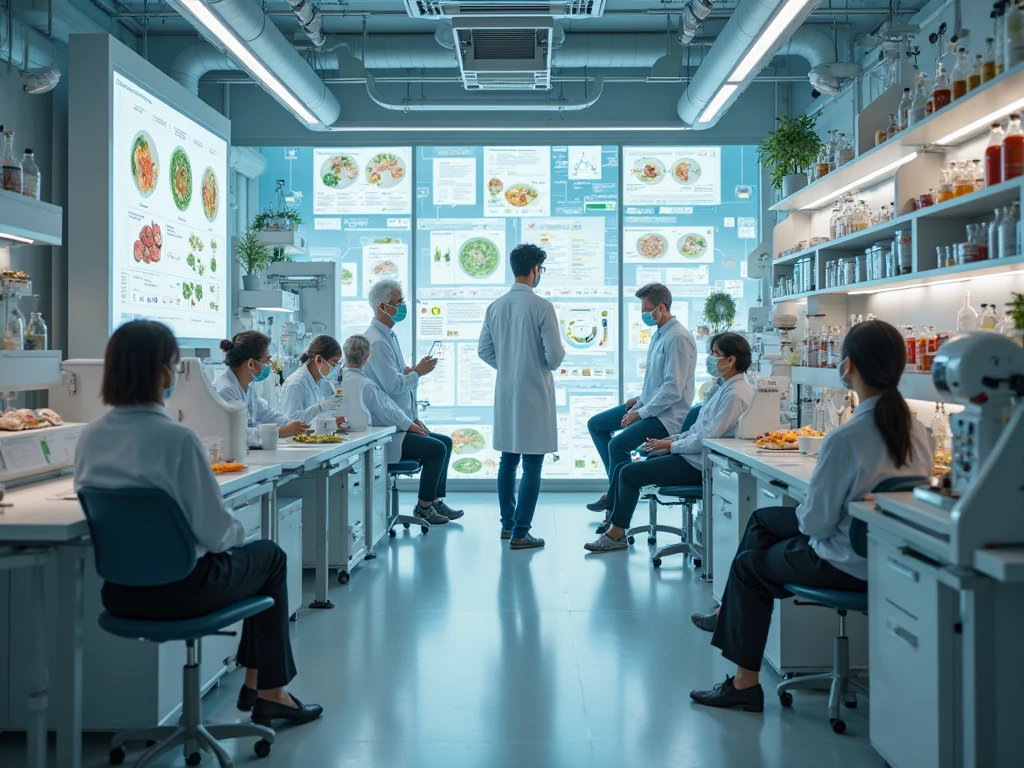Discover how cutting-edge AI, wearable tech, and next-gen superfoods are helping us live longer and healthier.
Aging is no longer an inevitable decline—it is a process we can optimize, extend, and even redefine. Advances in artificial intelligence (AI), wearable technology, and superfoods are revolutionizing the way we approach longevity. What was once science fiction is rapidly becoming reality.
By 2050, the number of centenarians worldwide is expected to reach 3.7 million. Could you be one of them?

Wearables: Monitoring Biomarkers for Longevity
Wearables have evolved far beyond counting steps. Today, they monitor key aging biomarkers, providing real-time data on inflammation, oxidative stress, and cellular health. Devices like the Oura Ring and WHOOP track sleep quality and recovery, while newer technologies measure levels of NAD+—a crucial coenzyme linked to cellular repair and longevity.
A Real-World Example
Emma, from London, a 48-year-old biohacker, tracks her biological age using a wearable that measures epigenetic markers. Last year, her device detected early signs of chronic inflammation. By adjusting her diet, sleep, and supplement intake based on AI-driven insights, she reversed her biological age by five years.
Further Reading: Harvard Health on Nutrigenomics
AI-Powered Nutrition: Personalized Diets for Lifespan Extension
Artificial intelligence is transforming nutrition by making it hyper-personalized. Apps like Nutrino and Lifesum already analyze genetic data, microbiome composition, and metabolic responses to recommend optimized meal plans. In the near future, AI nutritionists will continuously adjust diets based on real-time biomarker feedback from wearables.
How This Works in Everyday Life
Mark, from Miami, a 55-year-old executive, uses an AI-driven nutrition app that detects a spike in inflammatory markers. The app immediately suggests swapping his usual breakfast for a nutrient-dense smoothie rich in antioxidants and adaptogens. Within weeks, his inflammation markers drop, and his energy levels improve.
Further Reading: NIH on Genetics and Nutrition
Superfoods of the Future: Enhancing Longevity at the Cellular Level
Scientists are developing next-generation superfoods designed to mimic fasting benefits, stimulate mitochondrial function, and activate longevity genes like SIRT1 and FOXO3.

Top Longevity Superfoods
- Astaxanthin-Rich Algae – Reduces oxidative stress.
- Adaptogenic Mushrooms (Reishi, Lion’s Mane) – Boosts brain function and immunity.
- Fisetin & Quercetin – Natural senolytics that remove aging cells.
- Marine Collagen & Peptides – Supports skin elasticity and joint health.
- Spirulina – A nutrient-dense algae that supports immune function and reduces inflammation.
- Olive Polyphenols – Found in extra virgin olive oil, these compounds protect against oxidative damage and promote heart health.
Sophia, from Los Angeles, a 62-year-old yoga instructor, incorporates adaptogenic mushrooms and astaxanthin into her diet daily. Her biological age? 50.
Further Reading: WebMD on Personalized Diets
Beyond AI and Superfoods: The Biohacking Revolution
Other Powerful Longevity Biohacks
- Cold Therapy (Cryotherapy) – Triggers cellular resilience.
- Red Light Therapy – Enhances mitochondrial function and collagen production.
- Fasting Mimicking Diet – Activates autophagy and cellular regeneration.
- Breathwork Training – Optimizes oxygen utilization and reduces stress, enhancing cellular function.
- Grounding (Earthing) – Direct skin contact with the earth’s surface may help reduce inflammation and improve sleep quality.
Further Reading: American Society of Human Genetics on Nutrigenomics
A Glimpse into 2050: An Interview with a Future Longevity Scientist (Use our imagination)
Insight from 2050: A Conversation with Dr. Alex Mercer
Interviewer: “Dr. Mercer, people today struggle to reach 100. In 2050, what’s the average lifespan?”
Dr. Mercer: “With AI-driven health management, daily biomarker tracking, and targeted nutrigenomics, most people live well beyond 120—without age-related diseases.”
Interviewer: “What role does AI play?”
Dr. Mercer: “AI predicts health risks before they develop, crafting real-time lifestyle adjustments. Combined with gene therapy, it has turned aging into a managed condition rather than an inevitability.”
The Takeaway: Longevity is No Longer Passive—It’s a Choice
Aging is shifting from a passive experience to an actively managed process. AI, wearables, and next-generation superfoods are providing the tools to extend not just lifespan but healthspan—the years spent in peak physical and mental condition.
What Small Change Can You Start Today?
- Track your sleep with a wearable.
- Try an AI-driven nutrition plan.
- Add a longevity superfood to your diet.
- Incorporate short periods of fasting into your routine.
- Spend more time outdoors to optimize circadian rhythms and vitamin D production.
Further Reading: Academy of Nutrition and Dietetics on Nutrigenomics
FAQ: The Future of Aging and Longevity
• Can wearable devices like the Oura Ring really track biological aging?
A: Yes! Advanced wearables now monitor biomarkers like NAD+ levels and epigenetic markers (mentioned in the “Wearables” section). For example, Emma from London reversed her biological age by 5 years using real-time data on inflammation and oxidative stress. Harvard Health’s research on nutrigenomics, linked in the post, supports this approach.
• How does AI personalize diets for longevity?
A: Apps like Nutrino (referenced in “AI-Powered Nutrition”) analyze your genetics, microbiome, and real-time biomarker data. For instance, Mark from Miami reduced inflammation by following AI-driven meal swaps. The NIH study linked in the post explains how genetics shape nutritional needs for lifespan extension.
• Are superfoods like astaxanthin and fisetin worth the hype?
A: Absolutely. The post’s “Superfoods of the Future” section highlights how astaxanthin reduces oxidative stress, while fisetin acts as a senolytic—clearing aging cells. Sophia from LA, aged 62, lowered her biological age to 50 using adaptogens and marine collagen. WebMD’s guide on personalized diets, linked in the post, offers further validation.
• What’s the most affordable biohack for longevity?
A: Try the fasting-mimicking diet (covered in “Biohacking Revolution”). It activates autophagy—cellular cleanup—without costly tools. Red light therapy (also mentioned) is another budget-friendly option, boosting collagen and mitochondrial function. The post’s “Takeaway” section suggests starting with circadian rhythm optimization via outdoor time.
• Will AI really let us live to 120 by 2050?
A: According to the post’s futuristic interview with Dr. Alex Mercer, AI-driven gene therapy and real-time biomarker tracking could make 120 the norm. While speculative, studies like those from the Academy of Nutrition and Dietetics (linked) show nutrigenomics is already extending healthspan today.
Watch & Learn
- TED-Ed: How the Food You Eat Affects Your Brain – 18M+ views
- Dr. Rhonda Patrick: Nutrigenomics & Personalized Nutrition – 500K+ views
The future of aging is here. Are you ready to embrace it?
Discover more from WST
Subscribe to get the latest posts sent to your email.




